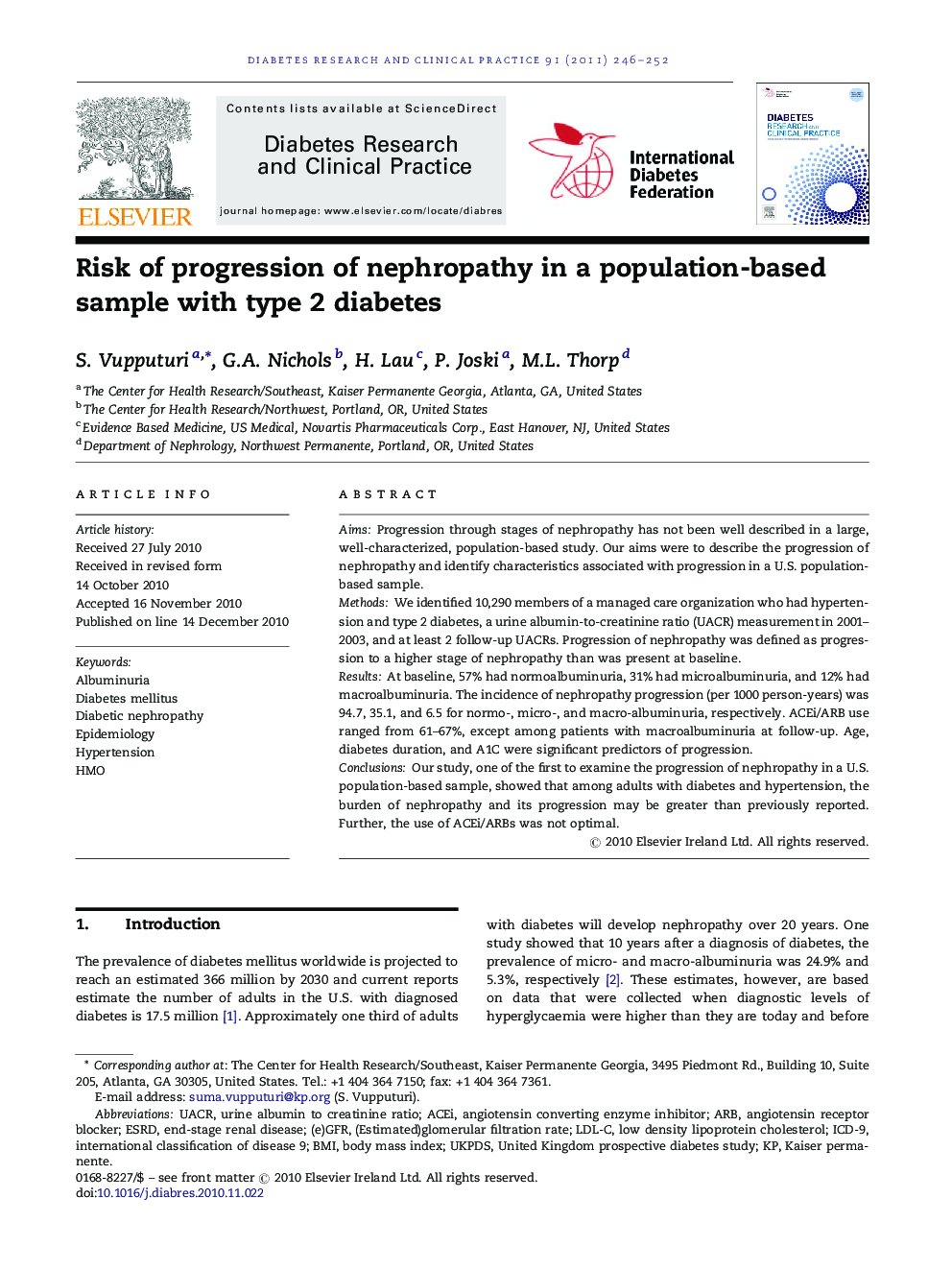| Article ID | Journal | Published Year | Pages | File Type |
|---|---|---|---|---|
| 2797360 | Diabetes Research and Clinical Practice | 2011 | 7 Pages |
AimsProgression through stages of nephropathy has not been well described in a large, well-characterized, population-based study. Our aims were to describe the progression of nephropathy and identify characteristics associated with progression in a U.S. population-based sample.MethodsWe identified 10,290 members of a managed care organization who had hypertension and type 2 diabetes, a urine albumin-to-creatinine ratio (UACR) measurement in 2001–2003, and at least 2 follow-up UACRs. Progression of nephropathy was defined as progression to a higher stage of nephropathy than was present at baseline.ResultsAt baseline, 57% had normoalbuminuria, 31% had microalbuminuria, and 12% had macroalbuminuria. The incidence of nephropathy progression (per 1000 person-years) was 94.7, 35.1, and 6.5 for normo-, micro-, and macro-albuminuria, respectively. ACEi/ARB use ranged from 61–67%, except among patients with macroalbuminuria at follow-up. Age, diabetes duration, and A1C were significant predictors of progression.ConclusionsOur study, one of the first to examine the progression of nephropathy in a U.S. population-based sample, showed that among adults with diabetes and hypertension, the burden of nephropathy and its progression may be greater than previously reported. Further, the use of ACEi/ARBs was not optimal.
